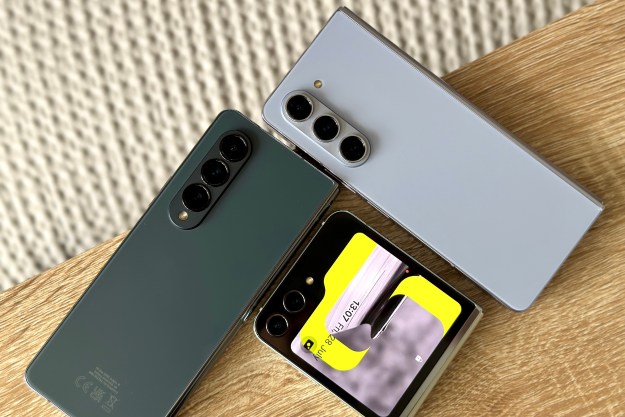Samsung is exploring other ways to bring the foldable phone to consumers. The company has filed for a new design patent that could indicate where it wants to go next with the foldable phone — a device that can fold twice.
The device, which was first spotted by Dutch website Let’s Go Digital, would essentially have three displays — and would be able to fold twice into a smaller form factor like a smartphone. Then, when you want to fold it out, it could have a much larger display than a device with a single fold. Let’s Go Digital has crowned this type of fold the “Z-Fold.”

This isn’t the first phone patent we’ve seen in the last week with a Z-Fold type design. Just yesterday, photos surfaced of a device from LG that had a large main display that folded once, with a second display that was smaller and could be folded out. It’s not one single display — there’s a small gap between displays — but it is a concept for a phone that could effectively have a display the size of three phones.
Samsung’s patent, was approved at the end of May, but was eventually published in the Korean Intellectual Property Office on August 7.
Of course, it could be some time before we see a device like this. While Samsung is actively working on foldable devices, they’re still a little thick when folded up. If the device folds twice, it would be even thicker, meaning it would be bulkier and harder to carry in a pocket. That said, there would be a trade-off — the huge display when unfolded, which could not only replace a tablet, but could even replace a small laptop display.

Another benefit of the Z-Fold-type display is the fact that the device would only need one display. The current Galaxy Fold actually has two displays, as it folds inwards — so the main display is on the inside of the fold, while the phone display is on the outside for one-handed use.
We’ll have to wait and see if Samsung ends up releasing something like this, but if it does it will likely be some time before it’s released to the public. Companies routinely file patents for tech that they’re exploring, and don’t end up using it.
Editors' Recommendations
- Something odd is happening with Samsung’s two new budget phones
- Every Samsung gadget we still expect in 2024
- A surprise phone just beat the Galaxy S24 Ultra in a big way
- Samsung’s newest Android tablet is a perfect iPad alternative
- A new version of the Samsung Galaxy S24 could be coming soon


